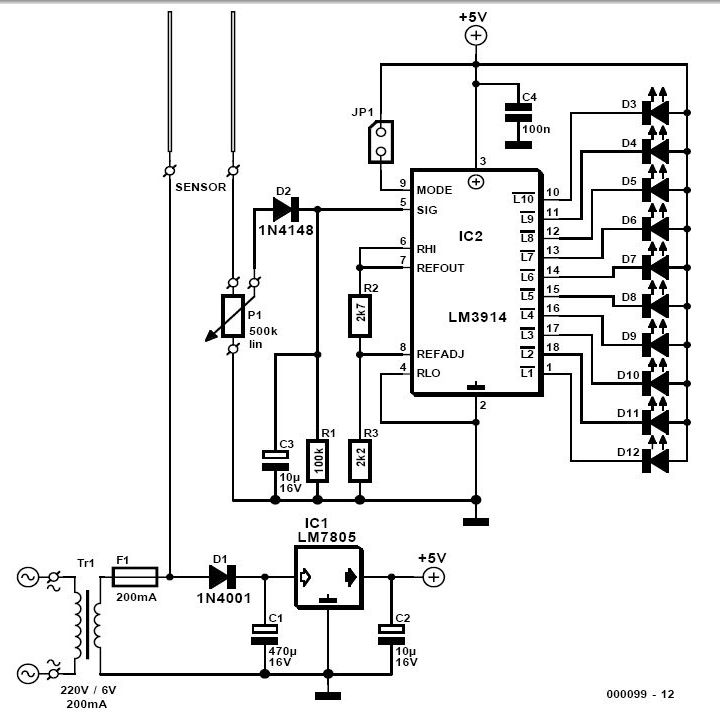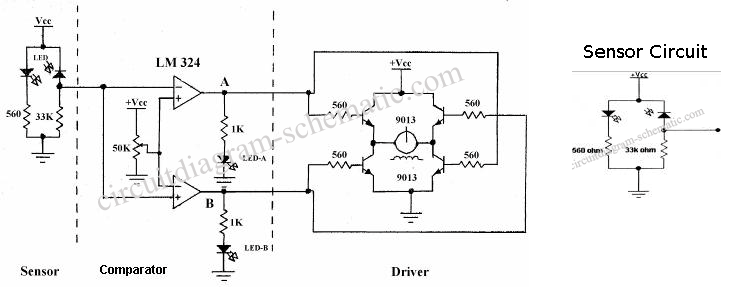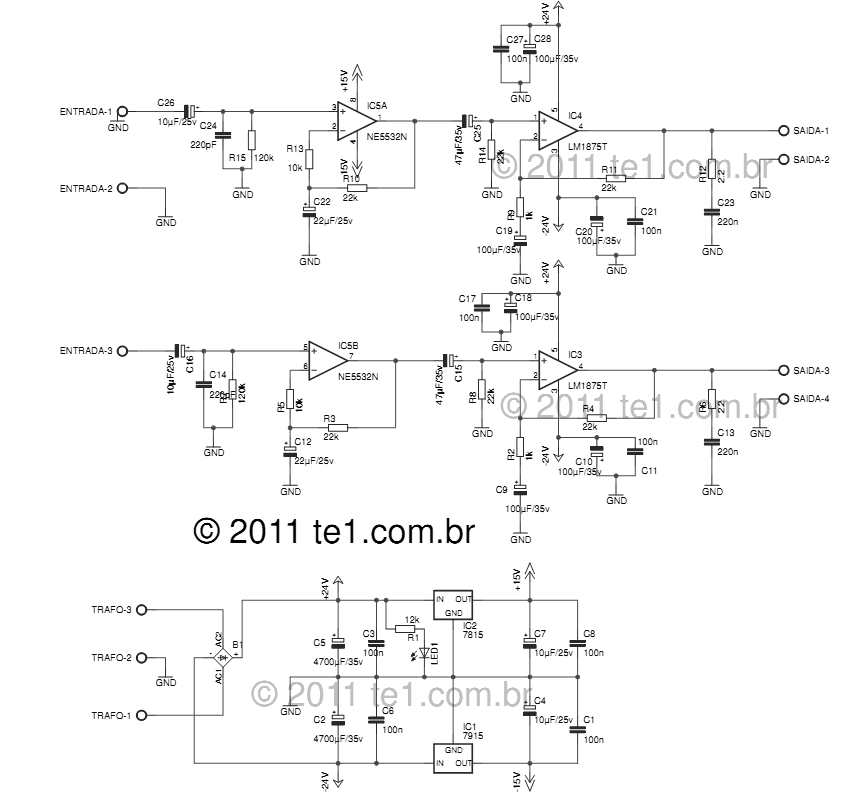
Soil Moisture Tester Circuit

For individuals who prefer not to engage directly with soil, this simple soil moisture tester efficiently assesses the condition of their plants and the level of care they require.
The soil moisture tester is a device designed to measure the moisture content in the soil, providing users with an indication of the hydration needs of their plants. The circuit typically consists of a moisture sensor, a microcontroller, and a display unit.
The moisture sensor is usually a resistive or capacitive type. In a resistive sensor, two metal probes are inserted into the soil. The resistance between these probes changes with the moisture level; as the soil becomes drier, the resistance increases. Conversely, a capacitive sensor measures the dielectric constant of the soil, which varies with moisture content. Capacitive sensors are generally more durable and less prone to corrosion compared to resistive ones.
The microcontroller processes the readings from the moisture sensor. It converts the analog signal from the sensor into a digital value that can be interpreted. This microcontroller can be programmed to set thresholds for moisture levels, allowing it to trigger alerts when the soil is too dry or too wet.
The display unit, which can be an LCD or LED, shows the moisture level in real-time. Some advanced models may include a graphical interface that provides additional information, such as optimal moisture levels for specific plants.
Power for the device can be supplied by batteries or an external power source, depending on the design. To enhance usability, features such as a low battery indicator or a calibration option for different soil types may be included.
Overall, the soil moisture tester is a practical tool for gardeners and plant enthusiasts, enabling them to maintain optimal plant health without the need for direct soil contact.For those of us who don t like to get their hands dirty, this simple soil moisture tester quickly checks the state of their plants and how much attention t.. 🔗 External reference
The soil moisture tester is a device designed to measure the moisture content in the soil, providing users with an indication of the hydration needs of their plants. The circuit typically consists of a moisture sensor, a microcontroller, and a display unit.
The moisture sensor is usually a resistive or capacitive type. In a resistive sensor, two metal probes are inserted into the soil. The resistance between these probes changes with the moisture level; as the soil becomes drier, the resistance increases. Conversely, a capacitive sensor measures the dielectric constant of the soil, which varies with moisture content. Capacitive sensors are generally more durable and less prone to corrosion compared to resistive ones.
The microcontroller processes the readings from the moisture sensor. It converts the analog signal from the sensor into a digital value that can be interpreted. This microcontroller can be programmed to set thresholds for moisture levels, allowing it to trigger alerts when the soil is too dry or too wet.
The display unit, which can be an LCD or LED, shows the moisture level in real-time. Some advanced models may include a graphical interface that provides additional information, such as optimal moisture levels for specific plants.
Power for the device can be supplied by batteries or an external power source, depending on the design. To enhance usability, features such as a low battery indicator or a calibration option for different soil types may be included.
Overall, the soil moisture tester is a practical tool for gardeners and plant enthusiasts, enabling them to maintain optimal plant health without the need for direct soil contact.For those of us who don t like to get their hands dirty, this simple soil moisture tester quickly checks the state of their plants and how much attention t.. 🔗 External reference





